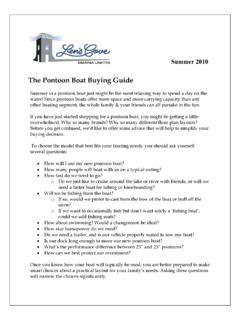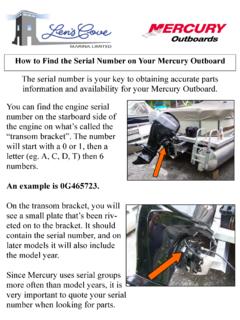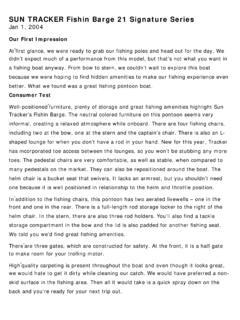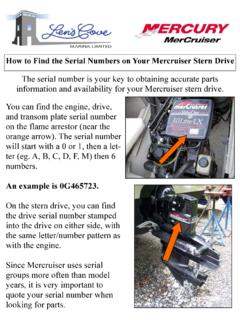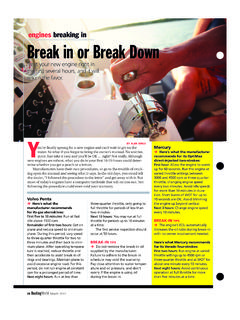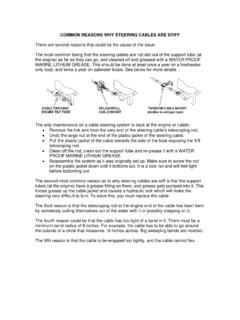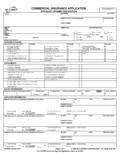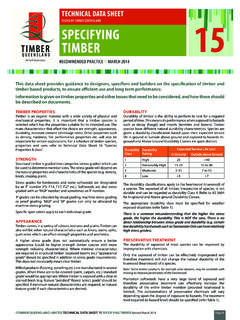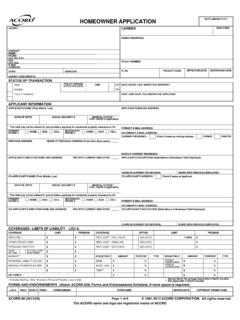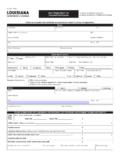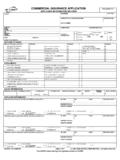Transcription of What is the correct height to mount the engine on the ...
1 What is the correct height to mount the engine on the transom? For a propeller to best satisfy particular boating needs, the engine must be attached to the transom at the correct height . Over the past 30 years, industry standards for transom heighthave been developed: 15" for "short shaft" engines, 20" for "long shaft" engines, and 25" for"extra-long shaft" engines. Standard Mounting A correct conventional installation would generally place the ant ventilation plate on manyengines about even with the boat bottom when the engine propeller shaft is parallel to the boatbottom (Figures 7-8 and 7-11). Lower Mounting Setting the engine lower (deeper in the water) (Figure 7-7) tends to: 1.
2 Cause excessive spray, 2. increase gear case drag, 3. reduce underwater clearance, and 4. adversely affect handling of faster boats. However, there are exceptions to the above. Many small fishing engines and some larger engines are designed to run with their ant ventilation plate an inch or two below the boatbottom. This can assist in reducing or eliminating propeller ventilation. Higher Mounting In the past, the only negative effect from mounting an outboard or stern drive higher than standard was an increase in propeller ventilation, which could cause difficulty in plaining,particularly with heavier loads.
3 However, as available power has steadily increased, and withimprovements in propeller design-particularly in the field of high-performance propellers-owners of faster boats have explored a new, higher range of performance that can beachieved by raising their engines above the old standard height . It is becoming more commonto raise outboards three inches or more above the standard on fast- boat installations (Figures 7-9 and 7-10). Outboard manufacturers are now recommending that engines be mountedhigher than the old standard, provided boat speed justifies it. In fact, a growing number of boatbuilders are building their faster outboard-powered boats with transoms 1" to 3" above thestandard height (usually 20").
4 boat builders of sport boats using stern drive propulsion are only slightly more to the use of non-racing stem drives, the "X" dimension is raised on fast, conventional single-drive boats by 1" to 2" (Figure 7-12) and on other bottom styles (such as catamarans) by 2" to 3". Twin drive installations will call for even less elevation. However, by raising an engine or drive to excessive transom heights, the increased risk ofengine overheating due to insufficient cooling water is a major concern. Manufacturers cannotbe held responsible for, nor accept, any warranty obligations for overheating damage causedfrom this type of excessive setup and operation.
5 Thus, the driver must accept the responsibilityof constantly monitoring the engine cooling water pressure and/or temperature. Some engines are equipped with overheat horns, but any engine can be rigged with a waterpressure gauge. However, a water pressure gauge can give you a false sense of security froma temporary, high pressure reading, resulting from a steam pocket trapped at the top of theblock. And the overheat horn doesn t give any feel for how close to overheating the engine is running. A water temperature gauge is the most reliable instrument for monitoring theoperating temperature of your engine . Top-of-the-block water temperature should not be allowed to exceed 140 (60 C) while waterpressure at full throttle should not be allowed to fall below 70% of the full throttle reading takenat a more conventional transom height .
6 Remember, as engine installation height is increased,your freedom to trim the engine out without overheating is reduced. Raising the engine can provide several advantages: 1. Reduced lower unit drag, thus increased speed (approximately one MPH per inch in the60-80 MPH range). 2. Improved handling on faster boats. Excessive rudder in the water at higher speeds on alight boat can increase handling problems and cause "chine walking" (left to right to leftrocking motion). 3. Greater clearance to underwater obstacles. 4. When combined with trimming out (the usual case), reduction of steering torque tonothing, especially at around a 23" transom height for a long-shaft engine .
7 5. In a few cases, improved planing off, by allowing the propeller to take in surface air,thus considerably increasing engine RPM, which results in more available horsepowerwhen it is needed. There are also some disadvantages to raising the engine above standard installation height (Figure 7-13): 1. As the engine is raised higher on the transom, the risk of overheating from lack ofsufficient cooling water increases. Cooling water flow must be monitored morefrequently. 2. At higher transom heights the trim tab is no longer effective as a means of alteringsteering torque.
8 Heavy steering torque may be encountered, and the driver mustmaintain a continuous firm grip on the wheel at all times when neither power steeringnor no-feedback steering is employed (Figure 7-14). 3. engine raising is not for heavier, slower boats. 4. A higher-rake, cupped, sharp-edged propeller is generally required. 5. In many cases plaining off, particularly with a load, is more difficult. 6. There is a little more vibration, which may reduce riding comfort, and eventually mayloosen parts on the engine and boat . 7. Dual- engine installations provide a new problem because, during turns, the outsideengine is lifted higher out of the water than a single, centrally located engine .
9 Thisusually means that with dual engines, they must be mounted an inch lower than a singleengine on a boat of similar speed. 8. The transom must be sufficiently strong when mounting more than an inch above theoriginal transom top. Your boat dealer or boat builder should be contacted. 9. As an outboard or stem drive is progressively raised, the propeller will eventually break the surface of the water. As this occurrence increases, a blade sweeping across thetop, fanning through air, will not pull as hard in a sideways or propeller torque directionas the fully submerged blade sweeping across the bottom of the propeller arc. This will cause a right-hand rotation propeller to want to move or walk to the right much as apaddle wheel would try to do (Figure 7-15).
10 This action in turn tries to pull the aft end ofan outboard or stem drive to the right, thus causing the boat to want to go into a right-hand turn if not resisted at the steering wheel (Figure 7-16). This steering pull will either add to or subtract from the steering pull generated by the propeller shaft runningtrimmed in or trimmed out. When the propeller is elevated perhaps 5" or more abovethe standard height , the "paddle wheel" effect will completely dominate any othersteering torque cause (Figure 7-17). Centering the engine Generally, centering the engine within approximately 1/4" ( mm) is desirable (Figure 7-18). As an engine (installed on a normal vee-bottom hull) is moved off center, it is increasingly liftedout of the water when the boat is turned in the opposite direction, thus increasing the likelihoodof ventilation.
